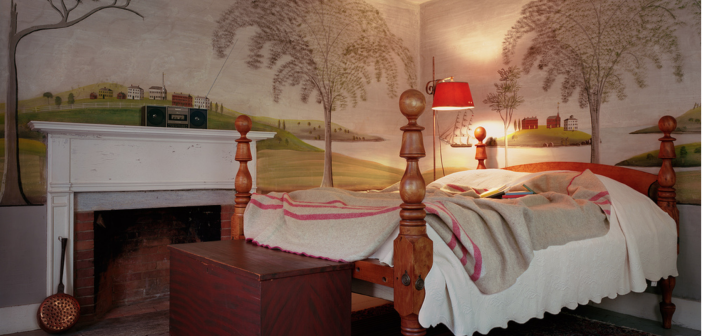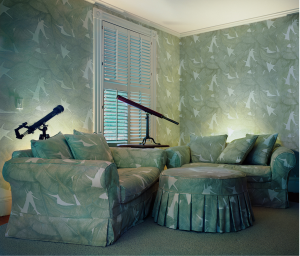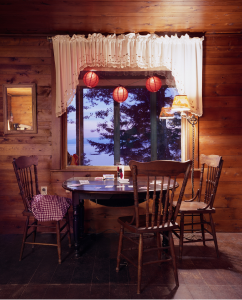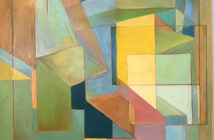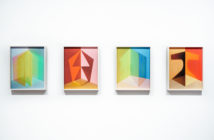Nest. Cave. Den. When we speak about our homes, the spaces we have carved out for ourselves in the world, we speak of them in terms once reserved for animal habitats. Like crows and magpies, drawn to bright plastics and aluminum foil, many of us cultivate our surroundings instinctively, making functional and sartorial choices that provide comfort and a sense of place.
In Second Nature, released by Charta in 2013, photographer Sarah Malakoff is specifically looking at the influence of the natural world within the home. "Landscape, weather, and wildlife lurk outside the walls," Malakoff writes, "even as they are brought safely inside in the form of pattern, simulation, and domesticated animals." Camera in hand, she studies the homes of friends, family, and acquaintances with precision and objectivity.
The chaos of the outside world—snow, sunlight, greenery—certainly creeps in at the edges of her scenes, suggesting that the walls of these homes are permeable. Windows and doors present as physical barriers but not visual ones. Indeed, in Malakoff’s work, framed views of the outdoors are as deliberately chosen as the furniture, plants, and domesticated animals that coexist inside.
Maurice Sendak memorably captures this intersection of inside and outside in his 1963 children’s picture book Where The Wild Things Are. In the first pages, a young boy, Max, misbehaves and is sent to bed without dinner. Sendak describes the events that follow with simple prose:
"That very night in Max’s room a forest grew
And grew—
And grew—
Until his ceiling hung with vines and the walls became the world all around."1
Sendak’s meditation on anger and imagination hinges on the capacity of Max’s room to provide an escape from his mental and emotional experiences. In the same vein, Malakoff conceives of the home "as both a refuge from and at times a re-creation of the outside world." For many of her subjects—the decorators, curators, and residents of the homes she photographs—the walls have indeed become "the world all around."
In Untitled Interior (stone rug), 2007, thriving indoor plants frame a window looking out on a leafy tree; an area rug in complimentary shades of tan, beige, and gray imitates the look of steppingstones. In Untitled Interior (boat bar), 2006, a full wall is dedicated to a bar fashioned in the likeness of a ship’s hull. While these items serve a decorative purpose, they also operate as references to larger places and experiences in the outside world. Ever neutral, Malakoff does not use her photographs to suggest which function is more important, but simply that both exist.
The curated spaces in Second Nature, and the choices that define them, are intimate portraits of their human inhabitants. Perhaps the occupant of Untitled Interior (loulou), 2008, stepped out to grab more firewood; maybe the resident of Untitled Interior (murals), 2011, is just out of the frame, brushing his teeth. Malakoff captures moments of suspended animation, but when we close her book, the forest continues to grow.
[1] Maurice Sendak, Where the Wild Things Are, Harper & Row, New York, 1963
[2] Untitled Interior (binoculars), 2008; Untitled Interior (aquarium), 2012; Untitled Interior (telescopes), 2011
[3] Untitled Interior (red lanterns), 2009; Untitled Interior (puzzle), 2008; Untitled Interior (monopoly), 2004; Untitled Interior (sofa and tree), 2010

